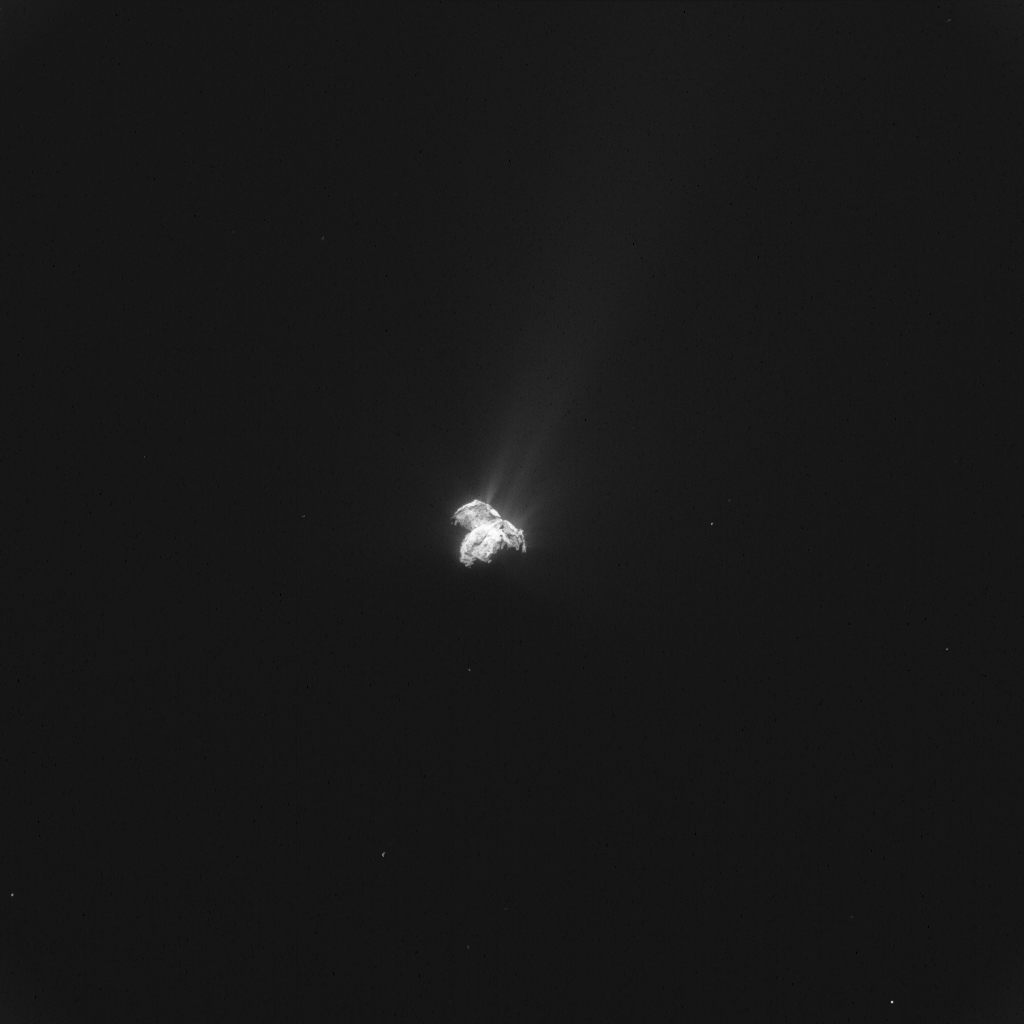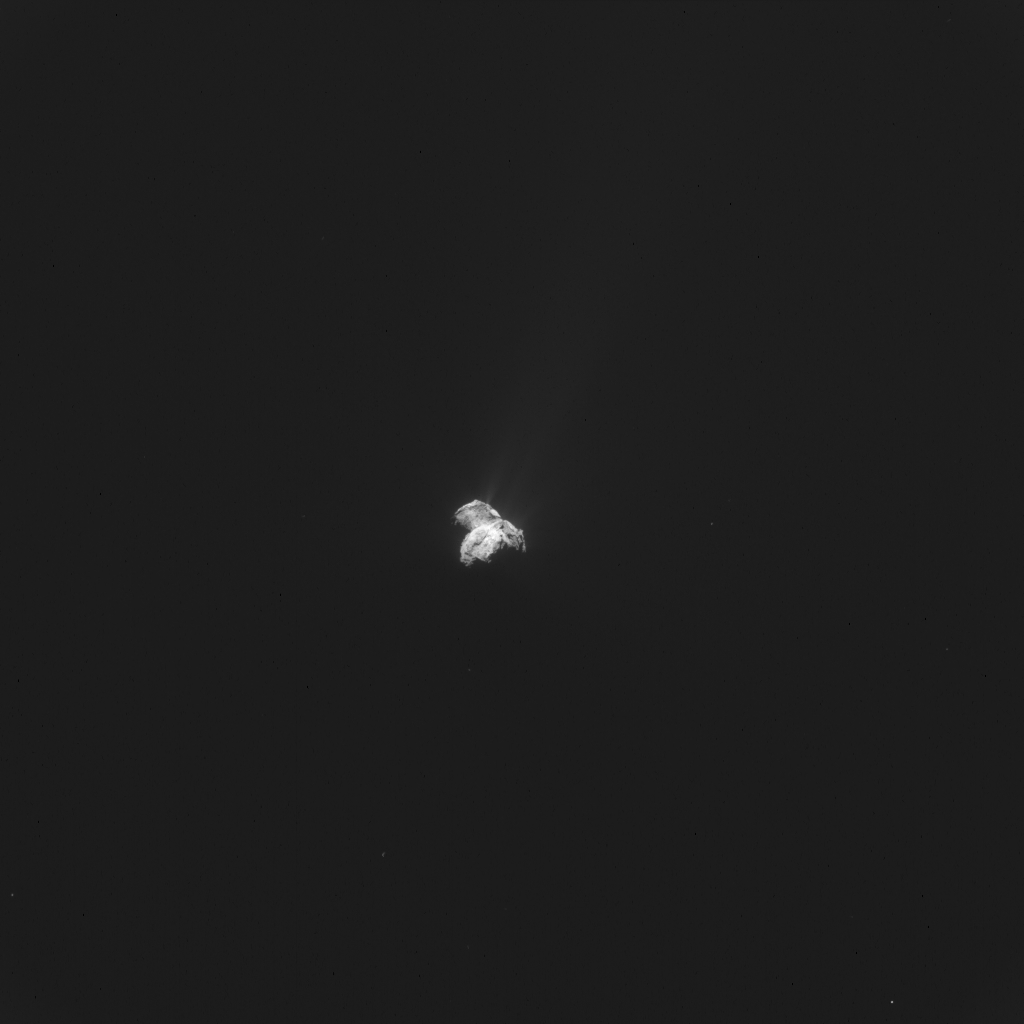This image of Comet 67P/Churyumov-Gerasimenko was taken by Rosetta’s NAVCAM on 9 October from a distance of 579 km.
The image scale is 49.4 m/pixel and the image measures 50.5 km across. The contrast is increased to better see the comet’s activity, with several distinct active regions clearly visible.

Single frame enhanced NAVCAM image of Comet 67P/C-G taken on 9 October 2015. Credits: ESA/Rosetta/NAVCAM – CC BY-SA IGO 3.0
In this orientation the comet’s small lobe is in the background, with primarily the Anuket region visible, and the large lobe is in the foreground with parts of Atum, Anubis and Khonsu visible.
Rosetta is currently on its return leg of a 1500 km far excursion to study the wider coma and plasma environment from afar, and is scheduled to reach a distance of 450 km from the comet by tomorrow (Saturday).
The original 1024 x 1024 pixel image is provided below.










Discussion: 10 comments
So that will be ~ 130 km in 8 days. About 16 km per day, or ~ 700 m per hour.. I’m assuming that they will still be looking very closely at the environment through which they are traveling.
This will add hugely to the results from previous measurements of the environments around comets at Halley, Grigg-Skjellerup and Giacobini-Zinner.
There is a paper, freely available, on the early results from 67p from 3.6 to 1.2 AU available here: https://iopscience.iop.org/article/10.1088/1742-6596/642/1/012005/meta;jsessionid=703D14177FBD0E156A41FEBE8D119E1E.c1
In it they compare the results to those obtained at Grigg-Skjellerup, and also to the AMPTE experiment.
Sorry, the above paper covers from 3.6 to 1.8 AU.
And just in case, to cover myself and the blog mods, under the terms of the Creative Commons 3.0 terms regarding “further distribution” of the paper, I probably should include the following:
Ion pickup observed at comet 67P with the Rosetta Plasma Consortium (RPC) particle sensors: similarities with previous observations and AMPTE releases, and effects of increasing activity
Coates, A.J. et al
IOP Publishing
Journal of Physics: Conference Series, Vol. 642, No. 1, 2015, pp 12005-12014
DOI: https://dx.doi.org/10.1088/1742-6596/642/1/012005
Should be safe now!
Thanks Ianw16 🙂
The deflection part is very important to me [also the electric fields].
Can we now consider Philae experiment as a lost adventure?
Rosetta is still too far from the comet to be in with a good chance of hearing from Philae; once closer again (something like 200 km or less) there will be opportunities again!
Jets begin to honor their name. Looking less “auroral”.
Just for remembering:
https://blogs.esa.int/rosetta/2015/06/19/cometwatch-14-june/
Stunning!
Outstanding photos. There is something amazing in this pictures.
Comet 67P is almost pitch black, reflecting only 6% of incoming light.
Are electrons on slow diffusion mode now?